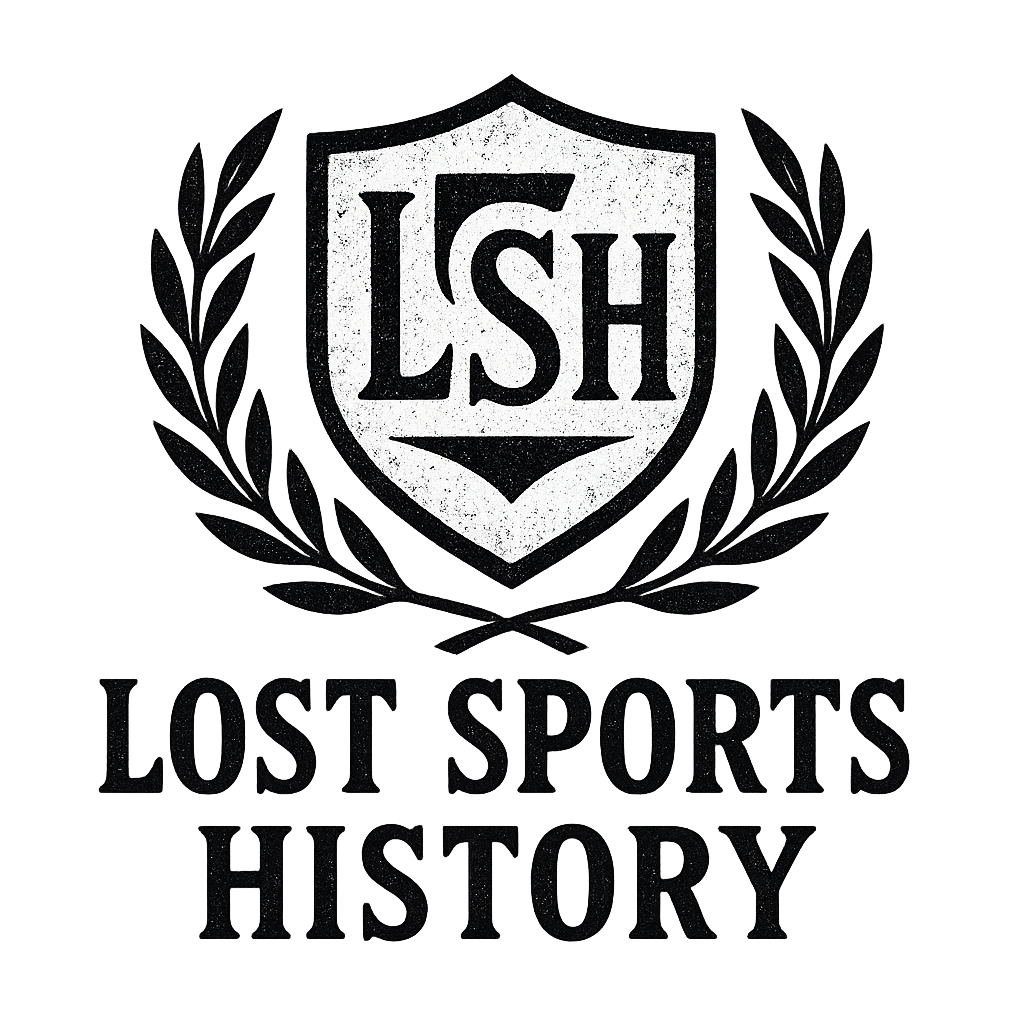Now Reading: Would Modern Athletes Dominate in Ancient Competitions?
-
01
Would Modern Athletes Dominate in Ancient Competitions?

Would Modern Athletes Dominate in Ancient Competitions?
Sports fans and historians have long debated which athletes are superior across different time periods. Would Usain Bolt be faster than the champions of ancient Greece? Could modern weightlifters lift more than the legendary athletes of the past?
In this article, we will explore the interesting comparison between modern athletes and their ancient counterparts. We’ll look at how athletic performance has evolved over time and discuss various factors that influence this evolution. Specifically, we will examine:
- Training methods used throughout history
- Changes in competition formats
- Differences in physical abilities across eras
- Cultural influences on athletic development
By diving into these topics, we hope to shed light on how athletic standards have changed and why it’s difficult yet intriguing to compare athletes from different periods. Whether you’re passionate about sports, interested in history, or simply curious, this exploration will challenge your views on athletic accomplishments and human potential.
The Ancient Olympic Games: A Brief History
The Ancient Olympic Games began in 776 BCE as a religious festival honoring Zeus in Olympia, Greece. These sacred competitions brought together Greek city-states, creating temporary peace treaties during the games – a practice known as the “Olympic Truce.”

Cultural Values Reflected in the Ancient Olympics
The ancient Olympics reflected important cultural values of the Greeks:
- Religious Devotion: Athletes performed ritualistic sacrifices and prayers before competitions
- Physical Excellence: Participants trained rigorously in gymnasiums called “palaestras” and often engaged in training that simulated combat skills
- Civic Pride: Winners brought honor to their city-states
- Military Preparation: Many events simulated combat skills
Strict Rules for Participation
The games had strict rules about who could participate:
Only free Greek men could compete – slaves, foreigners, and women were banned from participation. Women caught watching the games faced death by being thrown from Mount Typaion.
Events and Rewards
Events took place in the stadium of Olympia, which could hold about 40,000 spectators. Winners received:
- Olive wreath crowns (kotinos)
- Hero status in their communities
- Statues erected in their honor
- Free meals for life in their cities
This exclusivity contrasts sharply with modern Olympics, which celebrates diversity across:
- Gender
- Nationality
- Social status
- Athletic disciplines
The End of the Ancient Olympics
The ancient games continued for nearly 12 centuries until Roman Emperor Theodosius I banned them in 393 CE, marking the end of this remarkable chapter in athletic history. However, some events from these ancient games were deemed too dangerous to continue or even extreme challenges that led to fatalities, highlighting the rigorous nature of these competitions.
Evolution of Training Methods: From Philosophical Approaches to Sports Science
Ancient Greece: A Holistic Approach to Training
Ancient Greek athletes embraced a holistic approach to training, centered around the concept of arete – the pursuit of excellence in both mind and body. The gymnasium served as a hub for physical and intellectual development, where athletes engaged in:
- Physical exercises performed naked (gymnos)
- Philosophical discussions about virtue and human potential
- Musical training to enhance rhythm and coordination
- Dietary practices based on traditional wisdom
The Role of Trainers in Ancient Greece
Ancient trainers (paidotribai) prescribed specific regimens:
“A mixture of exercises, including running on sand to build leg strength, carrying heavy weights, and practicing with weapons to develop combat skills” – Philostratus, Handbook for the Athletics Coach
This holistic training method has influenced modern athletic training.
The Impact of Sports Science on Modern Training
Modern athletic training has transformed through scientific advancement. Today’s athletes benefit from:
- Biomechanical analysis using motion capture technology
- Personalized nutrition plans based on genetic testing
- Periodization of training cycles
- Recovery techniques including cryotherapy and compression therapy
- Mental conditioning through sports psychology
The Integration of Technology in Athletic Preparation
The integration of technology has revolutionized athletic preparation:
- Heart rate variability monitoring
- GPS tracking for performance metrics
- Force plate analysis for power output
- Blood lactate testing for metabolic efficiency
The Ongoing Influence of Sports Science
Sports science continues to push the boundaries of human performance through evidence-based methodologies and cutting-edge research in exercise physiology, nutrition, and biomechanics.
The Vanishing Ancient Sports and Their Relevance Today
However, it’s interesting to note that some ancient sports have almost vanished from our modern-day games. While others have seen modern revivals, the essence of these ancient practices still holds relevance today. For instance, certain elements of ancient football can still be observed in our current football games.
Competition Formats and Event Diversity: A Comparative Analysis
The ancient Olympic Games featured a stark contrast to today’s diverse sporting landscape. The original games began with a single event – the stadion, a 200-yard foot race. As the games evolved, they expanded to include:
- Wrestling (pale)
- Boxing (pygme)
- Pankration – a combination of wrestling and boxing
- Chariot racing
- Pentathlon – consisting of running, long jump, discus throw, javelin throw, and wrestling
The ancient games typically lasted 5 days, with approximately 18 different competitions. Athletes competed naked, symbolizing equality and celebrating the human form.
Modern Olympics: A Dramatic Expansion
Modern Olympics present a dramatically expanded scope:
- 339 events across 33 sports (2020 Tokyo Olympics)
- Mixed-gender competitions
- Team sports alongside individual events
- Specialized categories based on weight, age, and skill level
- Paralympic Games for athletes with disabilities
Evolution of Competition Formats
The evolution of competition formats reflects broader societal changes. While ancient games emphasized raw physical prowess in combat-oriented events, modern Olympics incorporate technical precision, specialized equipment, and diverse athletic expressions. New sports like skateboarding, sport climbing, and surfing demonstrate the games’ adaptability to contemporary athletic culture.
The sheer variety of modern Olympic events creates opportunities for athletes with different body types and skill sets to excel, unlike the ancient games’ focus on a specific athletic archetype.
Athletic Performance Standards Through Time: An Evolutionary Perspective
Athletic performance standards have undergone remarkable transformations since ancient times. Modern athletes consistently break records that would have seemed impossible to their ancient counterparts. The 1896 Olympic marathon winner completed the race in 2:58:50 – a time that would now place them well behind recreational runners in many city marathons.
Several key factors drive these dramatic improvements in athletic capabilities:
- Advanced Training Methods: Techniques such as periodization, recovery optimization, and sport-specific conditioning have revolutionized how athletes prepare for competition.
- Nutritional Science: Personalized meal planning, supplement protocols, and hydration strategies are now integral parts of an athlete’s training regimen.
- Technological Innovations: Performance tracking devices, biomechanical analysis, and advanced equipment and gear are helping athletes optimize their performance.
- Medical Advancements: Injury prevention protocols, rehabilitation techniques, and performance psychology are playing crucial roles in keeping athletes at the top of their game.
The human body hasn’t changed significantly in the past 2,000 years, yet athletic achievements continue to push boundaries. A study of Olympic records shows an average performance improvement of 10-20% across most disciplines during the past century alone. Modern high school athletes now regularly achieve results that would have won Olympic medals in the early 1900s.
These improvements stem from our enhanced understanding of human physiology, psychology, and biomechanics. The combination of scientific knowledge, technological tools, and systematic training approaches has redefined what’s possible in athletic achievement.
The Role of Strength and Speed in Defining Athletic Greatness
Ancient Perspectives on Athleticism
In ancient Greece, athletes valued physical qualities that represented their society’s ideals of male beauty and military skill. Historical accounts depict the ideal athlete as someone who possessed:
- Balanced Musculature: Symmetrical development across the body
- Raw Power: Ability to wrestle bulls and lift heavy stones
- Explosive Speed: Quick bursts needed for combat and hunting
- Functional Strength: Practical power for daily tasks and warfare
Modern Standards of Measurement
Today, athletic standards have evolved into highly specialized criteria:
- Measurable Power Output: Watts produced during specific movements
- Speed Measurements: Electronic timing systems accurate to milliseconds
- Strength-to-Weight Ratios: Scientific calculations of power efficiency
- Sport-Specific Requirements: Tailored physical attributes for each discipline
Training Methods Then and Now
Ancient training methods focused on developing strength through natural movements and basic resistance exercises:
- Stone lifting
- Body weight exercises
- Wrestling practice
- Running in sand
In contrast, modern athletes employ advanced techniques such as:
- Periodized strength programs
- Speed-specific drills
- Biomechanical analysis
- Power development protocols
The Impact of Specialization
The physical demands of ancient sports required athletes to maintain a robust, versatile physique suitable for multiple events. On the other hand, modern athletes often specialize, honing in on specific physical qualities that optimize performance in their chosen discipline.
This specialization has resulted in remarkable achievements in particular areas of strength and speed, while ancient athletes thrived in overall athletic ability.

Could Modern Athletes Dominate in Ancient Competitions? A Hypothetical Analysis
A hypothetical competition between modern and ancient athletes presents fascinating scenarios. Modern athletes would likely excel in specific ancient events due to advanced training methods and superior physical conditioning:
Advantages for Modern Athletes:
- Enhanced understanding of biomechanics
- Superior nutrition and recovery protocols
- Access to specialized equipment and facilities
- Greater height and muscle mass due to improved nutrition
Potential Challenges:
- Different competition surfaces (sand vs. synthetic tracks)
- Unfamiliar equipment (ancient javelins, discus)
- Absence of modern footwear
- Adaptation to ancient rules and customs
Ancient competitions featured unique elements that could level the playing field. The pankration, a brutal combination of wrestling and boxing, demanded skills beyond pure athleticism. Modern athletes might struggle with the raw, unstructured nature of such events.
The environmental factors create another layer of complexity:
- Competition in extreme heat
- No protective equipment
- Barefoot performance
- Limited recovery time between events
Modern athletes would likely dominate in measurable events like running and jumping. Their superior strength-to-weight ratios and explosive power would give them significant advantages. Combat sports might see more balanced competition, where ancient warriors’ battle-hardened experience could match modern technical proficiency.
Conclusion: Bridging the Gap Between Eras for Future Generations of Athletes
The study of ancient athletic traditions has significant implications for modern sports development. By understanding the philosophical approaches of ancient Greek athletes – their focus on holistic development and the sacred nature of competition – we can enhance contemporary training methods.
Modern athletes and coaches can learn valuable lessons from ancient practices:
- The integration of mental and physical training
- The emphasis on natural movement patterns
- The celebration of athletic excellence as a form of cultural expression
These historical lessons have important implications for the future evolution of sports:
- Development of training programs that balance technological advancement with traditional wisdom
- Recognition of athletics as a cultural bridge between generations
- Preservation of core athletic values while embracing innovation
The connection between ancient and modern athletics shows us that sports are not bound by time, but rather create a continuous thread of human achievement. This understanding empowers future generations to build upon thousands of years of athletic knowledge while also pushing the limits of what humans can achieve.
References & Further Reading
Official Olympic Resources
- Olympic.org – Comprehensive history of Ancient Olympic Games
- International Olympic Committee – Modern Olympic standards and regulations
Academic Sources
- Perseus Digital Library – Ancient Greek texts and archaeological resources
- Journal of Olympic History – Scientific research on Olympic development
Books
- The Ancient Olympic Games by Judith Swaddling
- Sport in Ancient Times by Nigel B. Crowther
- The Complete Book of the Olympics by David Wallechinsky
Additional Resources
- Ancient Olympic Sports Database – University of Leuven’s detailed analysis
- Penn Museum’s Olympic Artifacts Collection – Archaeological evidence of ancient athletics
- World Athletics – Modern athletic performance records and standards
These resources provide in-depth information about ancient training methods, competition formats, and the evolution of athletic performance through history.
















